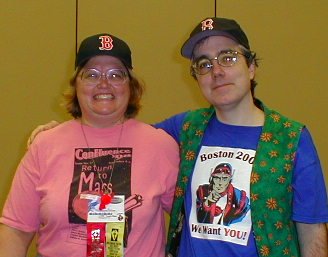The Voyage of the Space Beagle by A.E. van Vogt
About a dozen years ago, I reread a number of works of A.E. van Vogt and concluded that, while van Vogt was not very good at the novel level (re-reading The World of Null-A resulted in my agreeing with Damon Knight’s dismantling of it), he had written a number of still powerful short stories. The latest version of The New York Review of Science Fiction featured a long article by Joe Milicia on The Voyage of the Space Beagle, so I decided to re-read it.
The Voyage of the Space Beagle was originally published as four shorter works in Astounding and later turned into a fix-up novel by van Vogt, who added material to tie things together a bit more. It involves the voyages of the interstellar -- and eventually intergalactic -- exploratory ship the Space Beagle as it encounters for different alien beings or races, each of which becomes a threat to the ship that must be solved. Van Vogt is at his best during the encounters with the aliens that made up the original short stories. The aliens are memorable and often alien, and the crew has to come up with ways to defeat incredible threats. The two most memorable are “The Black Destroyer” and “Discord in Scarlet.” The former features a large cat like being (Coeurl) that is incredibly strong, can control magnetic fields, is very smart, and wants to kill and consume the crew. (It actually wants to consume what it thinks of as “id” which has no relationship that I can see to the Freudian term but really seems to mean life force or potassium, which somehow van Vogt combines. Science is not van Vogt’s strong point.) In the latter, the encounter an Ixtl, another super-powered alien, the sole survivor apparently from the dominant civilization of the previous cycle of the universe, that can walk through walls, is extremely intelligent, and wants to capture the crew so it can lay eggs in them, eventually to repopulate the universe with its kind. Both stories are great examples of the better type of pulp adventure of the early Campbell Astounding.
The novel is at its worst though in what van Vogt added to turn it into a novel. First off, we have many scenes of the scientists squabbling over which department should run the ship, with some ignoring the best solutions to problems for political reasons and sometimes resorting to outright thuggish behavior. Then we have the main character Grosvenor, the “Nexialist.” Van Vogt was fond of jumping on the bandwagons of various psychological theories, ranging from dianetics to general semantics. Nexisalism is the hobby horse of this novel. At first, a Nexialist is described as sort of a scientific inter disciplinarian, someone who can take what the specialists of various fields are doing and come to conclusions they might miss. But van Vogt doesn’t stop there. He manages to combine this with hypnotism and mind-control, making Grosvenor into a superman of sorts. It’s all rather silly and detracts from the more interesting parts of the novel.
In the end, The Voyage of the Space Beagle is worth reading for what’s good about it -- the very enjoyable short stories buried within -- but marred by the types of issues that effect a number of van Vogt’s longer works.


0 Comments:
Post a Comment
<< Home